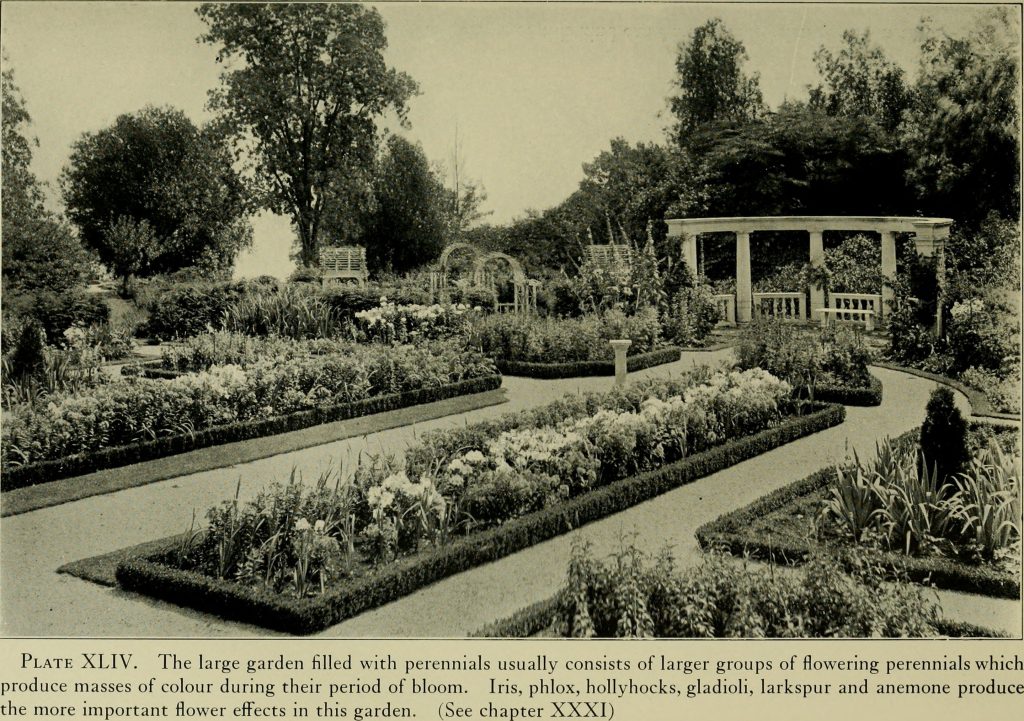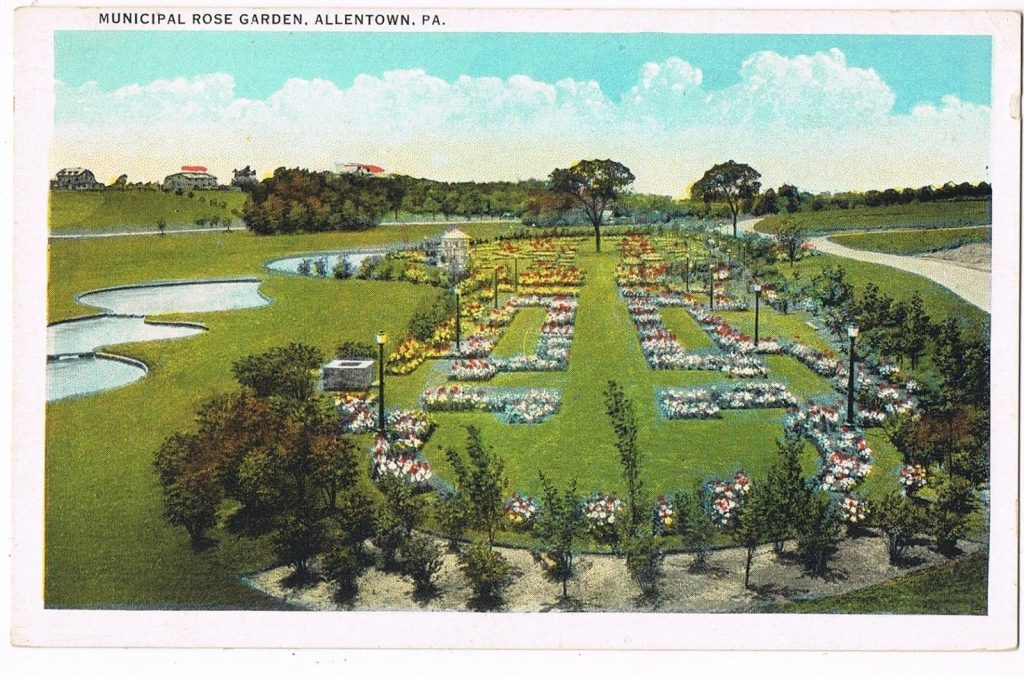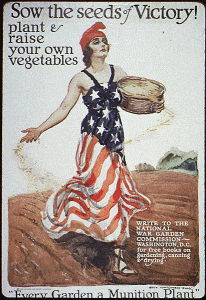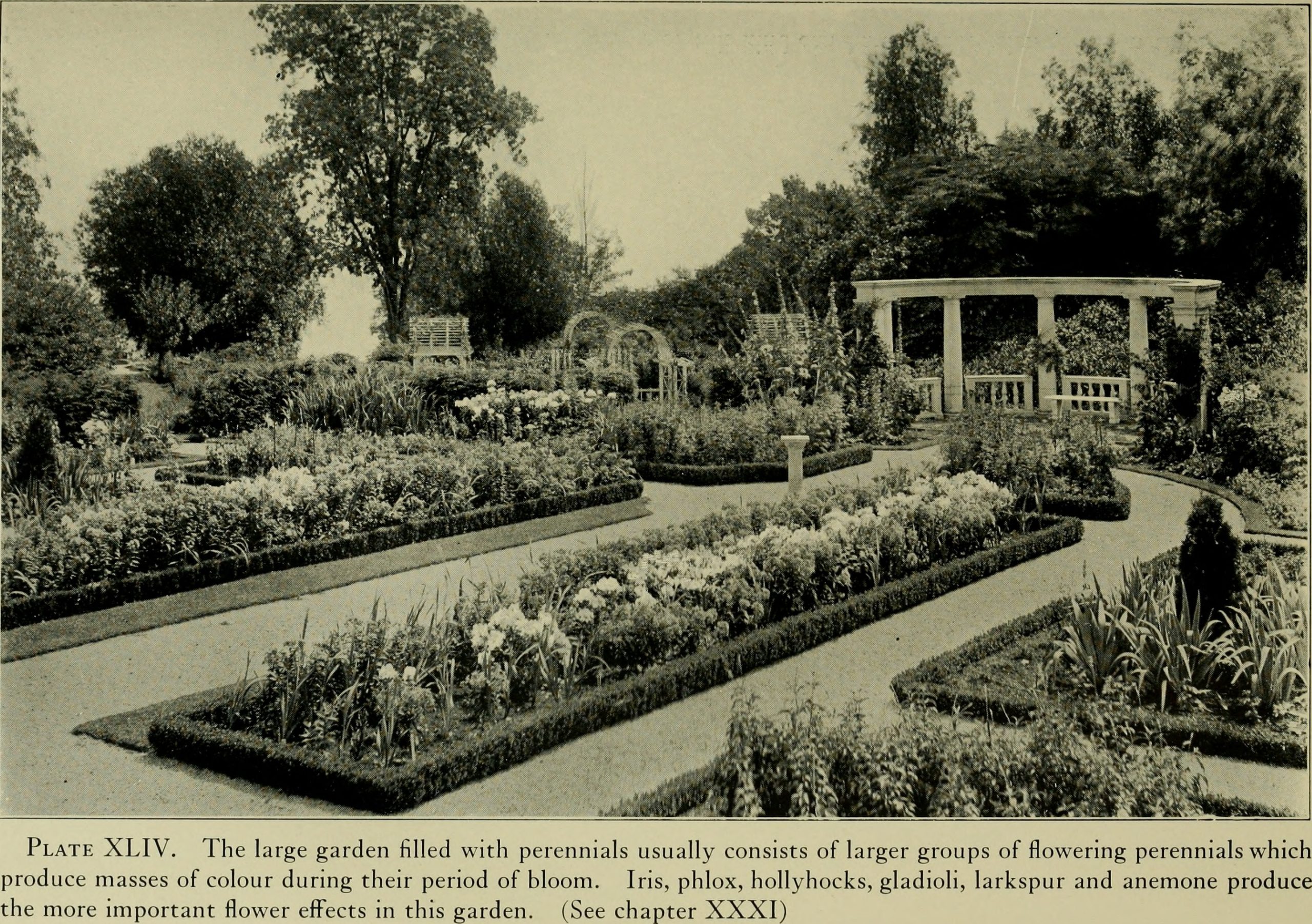Although some of us look at landscape design as more of a business than an art form, the truth is that landscaping has a rich and intricate history that has a lot to say about the social and cultural development of our society.
In fact, landscaping as a form of ancient art can be traced right back to one of the Seven Wonders of the World—the Hanging Gardens of Babylon, created in 600 BC.
The Hanging Gardens of Babylon, by Ferdinand Knab circa 1886 (Wikimedia)
While landscapers today are busy installing landscapes that bring the best of modern technologies (such as outdoor televisions and sound systems) to customers, it’s easy to forget just how much the idea of ‘landscaping’ has changed over time. Just a few decades back, landscaping was considered an absolute luxury. Only the well-to-do could afford to decorate their outdoor space with beautiful garden beds and patios or deck out their backyard with the latest outdoor toys, and landscaping company owners had to manage every aspect of the business manually.
Nowadays, some form of landscaping—even if it means a few trees, a small yard, a porch or patio—is expected. That being said, while basic landscaping is the norm, most homeowners actually take it a step further. They feel it is important to enhance the curb appeal to their home and, more importantly, they enjoy having an outdoor space that is completely tailored to their own tastes. Hence the desire to treat the landscape as an extension of the home, complete with all the comforts and added luxuries of the inside interior.
But it wasn’t always this way.
Let’s leave today’s Japanese-inspired spa gardens, outdoor kitchens, and fire pit tables behind for a moment and take a look back at the landscaping trends of days gone by.
Nature Guided Landscape Design in the Roarin’ 20s
1920s landscaping was all about the greenery. There was a real desire to celebrate and welcome nature in all its glory, which led homeowners to install bird feeders, birdhouses and birdbaths, as well as fish ponds and rock gardens—anything that would draw more nature to the home.
Bird watching was a popular hobby at the time, making plants and trees with berries (such as holly, hawthorn, nandina, rugosa roses, crabapples) popular choices for landscapers of the day.

A page from Albert David Taylor’s ‘(The Complete Garden)’ published by Doubleday in 1921.
In the 1920s home, the front yard was considered a public space and therefore received the most landscaping attention. Most houses featured a wide front porch, often furnished with rockers and swings so that folks could comfortably enjoy the natural outdoor scenery.
Front yards typically didn’t have fences, and walkways and driveways were often lined with perennials (such as Canterbury bells, irises, foxgloves, phlox, pyrethrum, coreopsis, hollyhocks, roses, columbine, delphinium, poppies, and carnations) and annuals (including California poppies, cosmos, petunias, snapdragons, verbena, bachelor’s buttons, Centaurea [sweet sultan], strawflowers, marigolds, Drummond phlox, and asters). Shrubs used by landscapers in this era included boxwood, holly, yews, abelia.
The backyard was often referred to as the “service area” and mostly reserved for clotheslines and storing garbage cans. However, some owners designated a small area in the backyard as a private place. In that case, part of the backyard would be screened off, fenced-in, or surrounded by a border of trees or shrubs to shield residents from the sun (and their neighbors’ watchful eyes).
In the 1920s, popular recreational activities often found their way into landscape architecture and design. Campfires, bowling greens, putting greens, and croquet grounds were among the more common landscape features.
Landscape Architecture Took a Backseat to The Depression in the 1930s
The decade of the Great Depression saw little advancement on the landscaping front. Most homeowners struggled to make ends meet, which meant little to no money was left over to spend on luxuries such as landscaping.

The municipal rose garden in Allentown, Pennsylvania, as depicted in 1930.
With that said, there were still a few popular gardening trends. Large rose gardens were favored during the 1930s, as were plants such as hydrangeas, lilacs, and hostas.
The War Inspired Victory Gardens in the 1940s
President Franklin D. Roosevelt encouraged Americans to grow their own produce to fight food shortages during the Second World War. Known as “victory gardens”, these home gardens flourished as patriotic citizens planted vegetables, fruit and herbs in their own backyards as well as in public parks.

Victory gardens not only fed families but united the country during a time of uncertainty. Communities came together to host festivals and competitions that showcased local produce. By May 1943, there were 18 million victory gardens in cities and farms across the United States.
At one point, the total amount of produce harvested by individuals equalled all commercial production. Once the war ended, the enthusiasm for DIY gardening faded in favor of the convenience of the grocery store.
Poster promoting victory gardens in the US.
‘Modern’ Landscape Architecture and Design Marked the Booming 50s
Consumerism is probably the most appropriate word to describe the theme of the 1950s. And just as it affected most aspects of life in the 50s, it influenced the type and style of landscaping that was popular in suburbia.
The sprawling lawn and decorative shrubbery of this former estate in Massachusetts (now the home of Stonehill College) are a great example of 1950s landscape architecture.
Looking back, we tend to associate the 1950s garden and landscaping style with all things tacky—garden gnomes, plastic pink flamingos, an overuse of evergreens as foundation plantings, and an excessive amount of green lawn. In other words, a far cry from the modern, eco-friendly landscaping style popular today!
While 1950s landscapes may conjure up images of plastic decorations and boxed hedges, the era was actually defined as a decade of modernism (albeit a type of modernism far different from the so-called modern styles of today).
An aerial view of a suburb in Levittown, PA that shows smaller landscape space in the 1950s.
Despite this, the rise of consumerism and love for all things with a price tag ushered in a fascination with big and showy items. Even in small yards, garden flowers were over-sized, vibrant and colorful; large tea roses like Garden Party roses, Tiffany roses, and Chrysler Imperial roses were popular choices.
In line with the whole “keeping up with the Jones’” concept, the front lawn was the symbol of suburbia dream living. The greener and bigger, the better! With the boom in consumerism and the desire to keep lawns perfectly maintained, the marketplace was flooded with lawn care products including chemicals for pest control. At this time, the first lawn spreader was also invented. Landscapers had access to these better tools, even though the landscape business software that would eventually transform their business and drive greater profitability was still a long way off.
The backyard became a social space in the 1950s home. Patios, porches, dining tables and barbeques replaced the clotheslines and garbage that once resided behind the home. While possessions were synonymous with a family’s image in the neighborhood, most homeowners didn’t want their dirty laundry and trash on display (especially not while the Jones’ were visiting!).
1960s Landscape Design Created Spaces for Family Enjoyment
Consumerism didn’t slow its pace into the 1960s, and we continued to see its effects on landscape design. It was a decade in which family was widely regarded as the most important aspect of life and nearly everything focused on enhancing the family-life experience. Backyard get-togethers and barbeques with family and friends were common activities, as were picnics and playing games in the backyard.
Americans aspired to make their yards an extension of the family space. Perhaps events such as the annual Easter Egg Roll on the sprawling front lawn of the White House (pictured here in a White House Historical Association photo from 1966 ) influenced this trend.
With such a strong focus on family and living the suburban dream, having the perfect lawn and landscape was all the rage in the 1960s. In fact, the more green space, the better! The lawn became a symbol of wealth, prosperity and the American dream; it symbolized the good life and everything that embodied.
With the arrival of new irrigation technologies, lush green lawns became possible for greater numbers of consumers. Golf courses grew increasingly green and were trimmed and polished like never before, while the commercial and corporate landscaping industries suddenly grew.
The ability to irrigate drove consumers to demand of landscapers lush, immaculate green lawns in the 1960s. (Image: UBC Micrometeorology)
Alongside this growing fixation on green lawns, the demand for lawn care intensified. Although pesticides had already hit the shelves, new products were constantly being introduced and marketed to homeowners.
Industrialization Drove a 1970s Shift in Landscape Design
The 1970s were a period of industrialization that revolutionized lawn care, among many other things. The leaf blower emerged, as did foreign, cheap labor—and both benefited landscaping companies at the time.
The 1970s rung in an era of industrialization and innovation in lawn care and landscaping. Equipment such as leaf blowers and lawn sweepers became available to consumers. (Image excerpt from: F. W. Bolgiano & Co ; Henry G. Gilbert Nursery and Seed Trade Catalog Collection )
On the home front, after a decade of consumerism, there was a general longing to get back to nature or ‘the way things were.’ People wanted to do more with the land they had, which resulted in the rediscovery of edible landscaping and gardening with native plants.
In the 1970s, homeowners became interested in decorating their landscape with herbs and vegetable gardens, as well as shrubs and trees that grew fruit. Landscape business owners were challenged once again to shift, learn new skills, and keep up with the evolving wants and needs of customers.
1980s: Computers Arrive on the Scene to Shake Up Landscape Architecture Once Again
The evolution of computer technology ushered in another transformation for the landscaping industry, this time with regards to how landscape projects were designed and developed.
In the 1980s, landscape designers began to complement traditional hand drawings with computer-based designs. It was the beginning of computerized drawing technology, which would later develop into the more sophisticated programs we use today.
Landscape maintenance companies also began to capitalize on lawn care technologies such as chemical treatments. Homeowners now had the choice between seed or sod for brand new lawn projects. The 1980s trend towards more elaborate and complex landscape design also proved favorable for landscaping companies.
DIY Meets Do-It-For-Me in 1990s Landscaping
In the late 1990s, the landscaping industry really established itself as an important service for homeowners. In the earlier part of the decade, do-it-yourself projects advocated by home and garden retailers like Home Depot boomed, threatening the livelihood of landscape companies.
However, the trend towards two people in the household working outside the home turned the tides late in the ‘90s. As household incomes grew and the time available for proper lawn and landscape care shrank, the demand for landscaping services returned greater than ever. In fact, home makeover shows and garden design programs on television propelled even more interest in home improvements and landscape design.
Landscape business software was in its infancy and focused almost exclusively on design, rather than building and operating the business.
Technology such as riding mowers enabled quicker, more efficient DIY lawn care in the 1990s, although many households still struggled to maintain their own landscaping. (Image: PhotoMIX)
The 1990s also saw the early stages of the green movement. Many companies began offering green landscape installation and maintenance services, as green products hit the shelves alongside traditional lawn care products. Home lawnmowers became more advanced and powerful, with ride-on options now widely available.
2000s a Boon for Landscape Design and Maintenance Providers
The landscaping industry hit an all-time high in the early 2000s. More and more people wanted to improve the curb appeal of their homes and, according to the Professional Lawn Care Associations of America, the industry reached approximately $25 billion in the U.S. by 2007.
Of course, when the economy plummeted in 2008, the landscaping industry (along with everyone else) suffered. The landscaping industry has long since rebounded. According to the 2018 Landscaping Services Industry Report, the industry has annual revenues of $93B (compared to an estimated $69.8B) in 2013, employs more than 1 million people and now represents 513,305 businesses.
Landscaping Trends Today, and In Future
Looking forward, it’s clear that environmental concerns will continue to drive landscaping trends whether the economy is failing, steady, or thriving. It continues to be about creating sustainable outdoor spaces and incorporating green practices in the care and upkeep of the landscape.
The California Academy of Sciences in Golden Gate Park, San Francisco, with sustainable building design by Renzo Piano.
Other trends include using native plants to reduce watering needs and maintenance, creating gardens that draw in wildlife, using plants that have a continuous bloom throughout the year, container gardening (especially popular with those living in the city and small spaces), and heirloom gardens.
Today’s landscaping trends carry on the theme of yesteryear’s focus on green and sustainable practices. The demands of the market are greater than ever—and so is the opportunity for progressive landscapers to succeed!
We help companies like yours improve productivity and better serve customers by providing the essential tools you need to build a better business. Discover the benefits of a Free LMN Account here.
Still have questions? Reach out to us by phone or email — we’re here to help!




